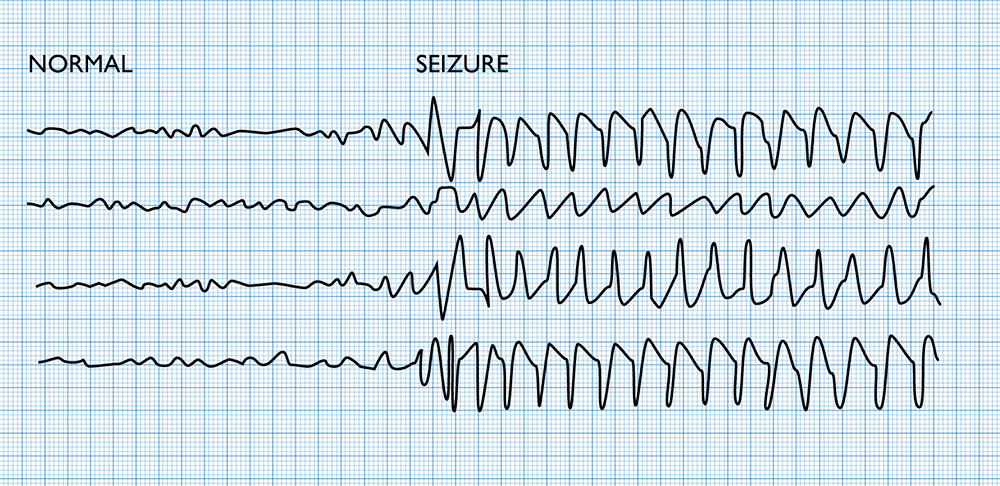
An electroencephalogram (EEG) is a recording of the electrical activity within the brain. It can be used to distinguish between seizure activity and non-seizure activity.
An epileptic seizure occurs as a result of abnormal electrical activity in the brain. Convulsions are the motor signs of this electrical discharge. There are many different types of seizures, which broadly can be divided into generalised seizure activity (affecting the whole brain) and partial seizure activity affecting a focal area of the brain.
The causes are numerous and include:
Broadly the management of seizures is directed at keeping the patient safe during convulsive activity, controlling the seizures pharmacologically and treating the cause. A patients ABC must be assessed and supplemental oxygen given. Benzodiazepines such as lorazepam, midazolam or diazepam are used to terminate seizure activity followed by drugs such as phenytoin or phenobarbitone in resistant cases. Early anaesthetic involvement is important if the patient does not respond to initial measures or enters status epilepticus (seizure lasting > 5 minutes). The management of status epilepticus is outlined in the medical emergencies section.

An electroencephalogram (EEG) is a recording of the electrical activity within the brain. It can be used to distinguish between seizure activity and non-seizure activity.
Sudden onset severe headache or a “first ever, worst ever” headache refractory to analgesia may indicate subarachnoid haemorrhage, usually caused by spontaneous rupture of a congenital ‘berry’ aneurysm. Neck stiffness, photophobia, vomiting or focal neurology (signs of raised intracranial pressure) would all raise your index of suspicion. Computed Tomography (CT) can confirm the diagnosis and referral to neurosurgery is indicated.
Meningitis is an inflammation of the meninges usually caused by infection. Bacterial meningitis is very serious and the mortality is high unless treated.
Symptoms include:
Opioid overdose is a common reason for a reduced conscious level. It can be a deliberate overdose (self harm) or accidental due to an administration error. It is also possible that normally safe doses of opioids can result in serious side effects if there is a decrease in kidney function as this leads to a reduced excretion of the drug and its metabolites. Other signs of an opioid overdose include a depressed respiratory rate and pin point pupils. An opioid overdose is reversed with naloxone, which is an opioid receptor antagonist. Benzodiazepines can also cause a reduced GCS, which can be treated with flumazenil.
See Medical Emergencies section on overdose